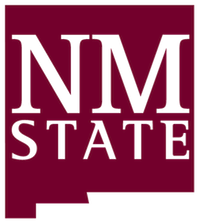Individuals, Communities, & Landowners
The Phoenix Guide
The Phoenix Guide is a handbook for watershed and community wildfire recovery that provides Conservation Districts, nonprofit groups, and communities with a step-by-step guide for developing a post-fire recovery and rehabilitation plan. The handbook addresses how to engage community members, organize volunteers, and restore watersheds following fire. Finally, it includes a list of grants and funding sources.
Community Wildfire Desk Guide & Toolkit
This guidebook is targeted local resource leaders and volunteers that may have a wide range of experience and expertise. It provides information to assist communities before, during, and after wildfire, as well as case study examples of how certain groups have worked. The post-fire section directs readers to programs and groups that can help communities threatened by secondary fire effects.
Flood Preparedness & Response: A Guide for Municipalities
A guidebook created by conservation districts that specifically addresses the flooding of streams and creeks that affects bridges, roadways, and other public infrastructure. The report provides some background on flooding as a natural process and guidance for creating an emergency action plan, preparing for a storm, what to do during a flood, and how to recover.
Post-Fire Treatments: A Primer for New Mexico Communities
A guidebook provided by the After Wildfire interagency team to provide communities and individuals with an introduction to various post-fire treatments, their effectiveness, and their cost. The guide also provides information to affected parties on consulting with experts and permitting. The user can reference easy-to-use tables that summarize the effects of different treatment options and helpful definitions in the appendices of the Primer. The information in this guide is relevant to all Southwestern states, not only New Mexico.
After Wildfire: A Guide for New Mexico Communities
This guidebook was created as an interagency response for fire affected communitiesâ requests for a âone-stop-shopâ for information to help them respond to wildfires. While some of the information is specific to New Mexico, most of the guidance is relevant to all communities in the southwest. This guide aims to help communities organize and respond to wildfire and subsequent flooding and includes information on safety, state and federal resources, contacts for assistance, ways to mobilize your community, and financial and funding tips for communities and families.
Forest Landowner Natural Disaster Desk Guide & Toolkit
This guide provides information to help forest landowners develop disaster plans for reducing the amount of salvage timber products and biomass generated by natural disaster. Additionally, the report includes ways to reduce the response and recovery time and expense generated from natural disasters.
A Landowner's Post-fire Decision Making Guide
A brochure that provides a list of post-fire restoration doâs and donâts, as well as an example of how a conservation district works with NRCS to provide technical assistance to landowners. The brochure also features Mulching 101, a brief description of what mulching can do to mitigate post-fire flooding.
Recovering From Wildfire: A Guide for Arizona's Forest Owners
This publication summarizes issues facing property owners after fire. The report includes information on how to protect property from destructive erosion and flooding, sources of financial assistance, how to remove or salvage lost and damaged trees, how to claim a casualty loss on a tax return, and other information on how to recover from wildfire damage. Additionally, this report includes some simple steps for assessing resource damage. This guide can be used be property owners throughout the Southwest.
Short Guide to Agencies, Programs, and Practices for Burned Area Rehabilitation
This guidebook is targeted to private landowners whose property has been affected by high intensity fire. Provided in this report is information on the agencies, programs, and practices that can help restore privately owned land to functional condition. Users can easily access the steps to initiate and complete a rehabilitation process on their land, as well as programs and funding resources to help during this process.
Homeowner's Guide for Flood, Debris, and Erosion Control
This webpage provides guidance specific to homeowners whose property is threatened by flooding, debris flows, and erosion. The guide gives instructions for installing cost effective devices to reduce damage to oneâs home from secondary fire effects. Here homeowners can find information on flood insurance, debris control aids, sandbags, how to control water intrusion, deflection devices, and engineered concrete block walls. This guide is also available in Spanish.
Wildfire Risk Reduction and Recovery Tips for Homeowners
This publication from NRCS details techniques, practices, and information for homeowners to assist in reducing risk associated with wildfires and post-fire flooding and erosion. The guidebook provides information on different treatments, when to use and how to apply them.
Flood Fighting Methods
This report was produced by the State of California and outlines methods that have been proven effective during many years of use on flood-related emergencies. The handbook covers threats to levees and embankments, sandbagging, and how to protect property and infrastructure.
Sandbagging Techniques
Sandbagging is one of the simplest and most effective ways to prevent or reduce flood damage. This guide from the U.S. Army Corps of Engineers details what types of materials should be used to fill sandbags, how to best fill bags, and strategies to successfully place sandbags.
Flood After Fire Fact Sheet
A one page fact sheet provided by the National Flood Insurance Program and FEMA that covers how wildfires increase risk of flooding and what residents can do to reduce their risk.
Emergency Flood Fight Training Manual
This manual provides information from the U.S. Army Corps of Engineers to assist communities and individuals who are protected by levees. It provides information on emergency levee inspection, maintenance and repair techniques to use before and during a flood event. The overall goal of the report is to assure that communities and individuals located in areas subject to flooding conditions are adequately prepared.






